We sorted blog entries and set off intending to find the British war cemetery and nearby cache then sort out the internet.
The GPS was not great today – it did get us places but not in a logical manner
. We were going back to the area we went with Nico yesterday but certainly did not take the same route. The drive up the other side of the valley still had the 10 hairpin turns while climbing 1000m but there were more roads on the top than we expected.
We eventually found the cemetery but after going 3 km on a very rough road well into the forest. The surface of the road was made of sharp flinty rocks (not gravel) so we drove very carefully to protect our tyres. There was a young gardener from the Commonwealth War Graves Commission there the whole time weeding the various flower gardens. The cemetery was small (about 100 graves from WW1) but it had a register and visitors book that we signed.
The cache was meant to be about 130 m from the cemetery but as we were in the middle of the forest GPS reception was poor and we had no luck finding it. We gave up quickly once we kept losing reception. We got back on a 1.5km road that was much easier, that the GPS didn't even recognise.
We then went to a 1915-1918 war museum in the nearby town of Canove. The woman at the entrance was concerned we might not know it was closed from 12 -3pm but we pointed to our watch to show her we knew. We got in for 2 euro instead of 3 but I am not sure if it was because I am a teacher or because we only had 30 minutes.
Although all the information was in Italian, we still found plenty of interest
. They had 12 rooms of displays with various weapons, photographs, old newspaper clippings and uniforms. There were even horseshoes and old motorcycles. We also took pictures outside where they had a display of old weapons.
We then moved to the biggest town in this part of the mountains, Asiago. When we were back in the trattoria we found a 3D relief map which showed the size of the plain at the top and we could see why the town was so big. We had heard we could get a red card to use internet hotspots in the town centre and near the information centre. This seemed better than trying to use a library which would be closed at lunchtime.
Unfortunately the one question we had not asked was the cost. We paid 10 euro which would have given us a lot of access but we were only there for part of the day!! Then to login we needed a mobile number and John didn’t know his as he was using a new sim card. We ended up ringing Nico to ask for the number as we knew it would show on his phone when we called
. After that we decided to stay and make full use of the access so had to let Nico know we would not be back to go for the drive we had planned at 2pm.Also as it was now after 12.30pm so all the shops were closed, so our picnic lunch wasn’t possible. (Many shops here close from 12.30pm to 2.30pm while the people rest). We had a late lunch then we left.
We had started to ignore the GPS as we had realised it would often take us down 5 narrow roads when 1 wider road would do. Mind you the widths are all relative. We have stopped being surprised at the widths but are still surprised by the speeds the drivers navigate them!! The speed limit is 90 km/hr outside of the towns and vehicles do this regardless of the road being reasonable or only 2m wide. We are often pulling over to let them pass as otherwise they drive right on your back bumper. The passing manoevours of the motor-cyclists defy description!
We did come across a group of boys playing in a street with a rugby ball which is very unusual in this football (soccer) crazy country. Nico thinks we are mad (’like Indiana Jones’) because of our exploring, but then he also says many of the local drivers are crazy!
We then drove to Meda, a small town back on our side of the river. Nico had told us the church at the top of the hill in the town had been the home for 2 monks for many years
. They were basically self sufficient growing their own vegetables on the hill top. The hill is like a pinnacle – very steep and winding. The church is now known as Meda castle because it was used as a fort later. Because it was a hill and also had tunnels beneath it, it was an easy spot to defend.
We trudged slowly up the path until we came to a tunnel close to the top. The cache notes we had indicated the 'treasure’ was hidden there but despite searching several dark corridors we had no luck. As we exited we met 3 Italian men about to enter so we had a brief ‘chat’ in our very limited Italian! We then carried on to the top to look at the church and the great view. The church was only small – 2 or 3 rooms and was locked up. The 360 degree views gave us a good look at the valley area and also reemphasized the heights of the surrounding hills/mountains. It was a very peaceful spot.
On the way down only a short distance from the church our GPS zeroed out and sure enough there was another small tunnel that was not so easy to spot
. It was very dark inside and not very high but our ‘el-cheapo’ torch had just enough light to eventually locate the cache about head height behind a rock about 50 metres in. It was a fun and satisfying find.
Before tea we drove up the valley. The mountains have bands of white, grey and in one place red rock. In the early evening light the white glows and it looks quite eerie although also very peaceful. One village looked especially lovely with the sun shining on the red roofs. Unfortunately no picture we took showed the effect.
In the evening after tea and in fading light, Nico drove us to Pedescala, a village less than 1km on the other side of the river. It had suffered from a Nazi atrocity in 1945. Apparently some young locals had killed 2 German soldiers. When no-one admitted to the killings the German’s destroyed the village by fire and killed 90 of the residents who were unable to escape. Most were tossed into the burning buildings. In the village there is a lane lined with trees with plaques commemorating those who perished. There is also a separate memorial to 19 others who were trapped in a barn and it was set alight. Nico explained that there is still a lot of resentment in the village and you must be careful how you approach the locals on the matter.
Nico’s father lived with his uncle in the forest high above the village on the other side of the valley and witnessed the whole event. He is still reluctant to talk in detail about it. There were also collaborators in the village and some met quite gruesome deaths e.g. a pick–axe in the back. Some of the collaborators later escaped to South America. There is still bad blood in the area so locals are still reluctant to talk openly. Nico mentioned that recently a documentary was made about the incident and some of those involved in the production stayed in Nico’s Tratoria. As a result one of the Germans was traced but he refused to cooperate. He also said that some of the sympathetic Germans had told villagers to escape the previous day. Some did, but others thought it was a trap, and hence died..
This was a sobering end to another interesting day in this lovely region.
Conquering the Valdastico hairpins
Thursday, June 24, 2010
 Barrcarola, Veneto, Italy
Barrcarola, Veneto, Italy
Other Entries
-
20A waltz in Vienna
Jun 0816 days prior Vienna, Austriaphoto_camera10videocam 0comment 2
Vienna, Austriaphoto_camera10videocam 0comment 2 -
21Vienna Paradox
Jun 0915 days prior Vienna, Austriaphoto_camera0videocam 0comment 0
Vienna, Austriaphoto_camera0videocam 0comment 0 -
22Proceeding to Prague
Jun 0915 days prior Prague, Czech Republicphoto_camera6videocam 0comment 1
Prague, Czech Republicphoto_camera6videocam 0comment 1 -
23The beauty of Prague
Jun 1014 days prior Prague, Czech Republicphoto_camera17videocam 0comment 0
Prague, Czech Republicphoto_camera17videocam 0comment 0 -
24Munchen mini stay
Jun 1113 days prior Munich, Germanyphoto_camera8videocam 0comment 1
Munich, Germanyphoto_camera8videocam 0comment 1 -
25The Romantic Road
Jun 1212 days prior Frankfurt, Germanyphoto_camera13videocam 0comment 0
Frankfurt, Germanyphoto_camera13videocam 0comment 0 -
26Meeting Margo in Marburg
Jun 1311 days prior Marburg, Germanyphoto_camera6videocam 0comment 0
Marburg, Germanyphoto_camera6videocam 0comment 0 -
27Out and about in Marburg
Jun 1410 days prior Marburg, Germanyphoto_camera6videocam 0comment 0
Marburg, Germanyphoto_camera6videocam 0comment 0 -
28The football in Marburg
Jun 159 days prior Marburg, Germanyphoto_camera2videocam 0comment 0
Marburg, Germanyphoto_camera2videocam 0comment 0 -
29Exploring Hesse
Jun 168 days prior Marburg, Germanyphoto_camera14videocam 0comment 1
Marburg, Germanyphoto_camera14videocam 0comment 1 -
30South to the Alsace
Jun 177 days prior Mittelbergheim, Francephoto_camera6videocam 0comment 1
Mittelbergheim, Francephoto_camera6videocam 0comment 1 -
31Vins des Pay
Jun 186 days prior Mittelbergheim, Francephoto_camera6videocam 0comment 1
Mittelbergheim, Francephoto_camera6videocam 0comment 1 -
32Strasbourg and Beyond
Jun 195 days prior Mittelbergheim, Francephoto_camera14videocam 0comment 0
Mittelbergheim, Francephoto_camera14videocam 0comment 0 -
33Back to Bodensee
Jun 204 days prior Meersburg (Bodensee), Germanyphoto_camera5videocam 0comment 0
Meersburg (Bodensee), Germanyphoto_camera5videocam 0comment 0 -
34Exploring Bodensee
Jun 213 days prior Meersburg (Bodensee), Germanyphoto_camera15videocam 0comment 0
Meersburg (Bodensee), Germanyphoto_camera15videocam 0comment 0 -
35Tratorria da Nando
Jun 222 days prior Barcarola, Italyphoto_camera9videocam 0comment 1
Barcarola, Italyphoto_camera9videocam 0comment 1 -
36Where eagles dare
Jun 231 day prior Barcarola, Italyphoto_camera8videocam 0comment 2
Barcarola, Italyphoto_camera8videocam 0comment 2 -
37Conquering the Valdastico hairpins
Jun 24 Barrcarola, Italyphoto_camera11videocam 0comment 0
Barrcarola, Italyphoto_camera11videocam 0comment 0 -
38On the road with Nico
Jun 251 day later Barcarola, Italyphoto_camera18videocam 0comment 0
Barcarola, Italyphoto_camera18videocam 0comment 0 -
39On the road to La Marche
Jun 262 days later Cupramontana, Italyphoto_camera6videocam 0comment 2
Cupramontana, Italyphoto_camera6videocam 0comment 2 -
40Settling in at Cupramontana
Jun 273 days later Cupramontana, Italyphoto_camera11videocam 0comment 0
Cupramontana, Italyphoto_camera11videocam 0comment 0 -
41Sun, sand and Sirolo
Jun 284 days later Cupramontana, Italyphoto_camera7videocam 0comment 0
Cupramontana, Italyphoto_camera7videocam 0comment 0 -
42Discovering Umbria
Jun 295 days later Cupramontana, Italyphoto_camera6videocam 0comment 0
Cupramontana, Italyphoto_camera6videocam 0comment 0 -
43Taking notes in Fabriano
Jun 306 days later Cupramontana, Italyphoto_camera3videocam 0comment 0
Cupramontana, Italyphoto_camera3videocam 0comment 0 -
44Mountain Monastery
Jul 017 days later Cupramontana, Italyphoto_camera11videocam 0comment 0
Cupramontana, Italyphoto_camera11videocam 0comment 0 -
45A lazy Le Marche day
Jul 028 days later Cupramontana, Italyphoto_camera5videocam 0comment 0
Cupramontana, Italyphoto_camera5videocam 0comment 0 -
46Welcome to Florence
Jul 039 days later Florence, Italyphoto_camera10videocam 0comment 0
Florence, Italyphoto_camera10videocam 0comment 0 -
47Discovering Florence
Jul 0410 days later Florence, Italyphoto_camera12videocam 0comment 1
Florence, Italyphoto_camera12videocam 0comment 1 -
48Tunnels and tolls
Jul 0511 days later Villarodin-Bourget, Francephoto_camera4videocam 0comment 2
Villarodin-Bourget, Francephoto_camera4videocam 0comment 2 -
49Ascending the Alps
Jul 0612 days later Villarodin-Bourget, Francephoto_camera29videocam 0comment 0
Villarodin-Bourget, Francephoto_camera29videocam 0comment 0 -
50From mountains to motorways
Jul 0713 days later Toulouse, Francephoto_camera6videocam 0comment 0
Toulouse, Francephoto_camera6videocam 0comment 0 -
51The fleas that tease....
Jul 0814 days later Toulouse, Francephoto_camera9videocam 0comment 2
Toulouse, Francephoto_camera9videocam 0comment 2 -
52Back to Basics
Jul 0915 days later La Bessede, Francephoto_camera11videocam 0comment 0
La Bessede, Francephoto_camera11videocam 0comment 0 -
53Living on the River
Jul 1016 days later Loches, Francephoto_camera11videocam 0comment 0
Loches, Francephoto_camera11videocam 0comment 0 -
54Chateaus and caches
Jul 1117 days later Loches, Francephoto_camera14videocam 0comment 0
Loches, Francephoto_camera14videocam 0comment 0 -
55A rewarding search
Jul 1218 days later Méautis, Francephoto_camera6videocam 0comment 0
Méautis, Francephoto_camera6videocam 0comment 0

 Barrcarola, Veneto, Italy
Barrcarola, Veneto, Italy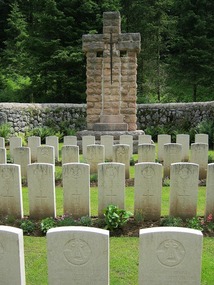
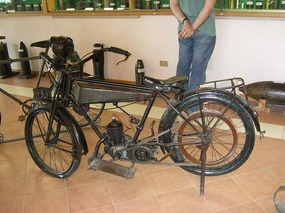
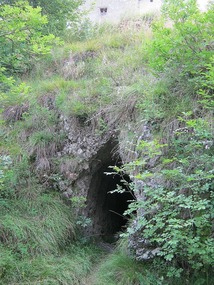
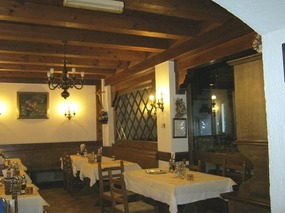
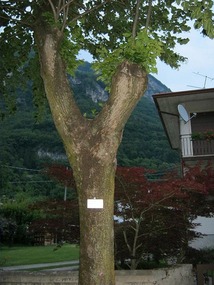





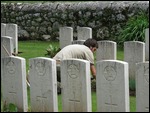
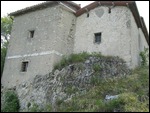
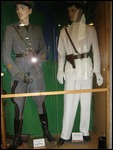
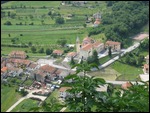
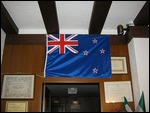
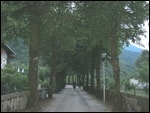
2025-05-23